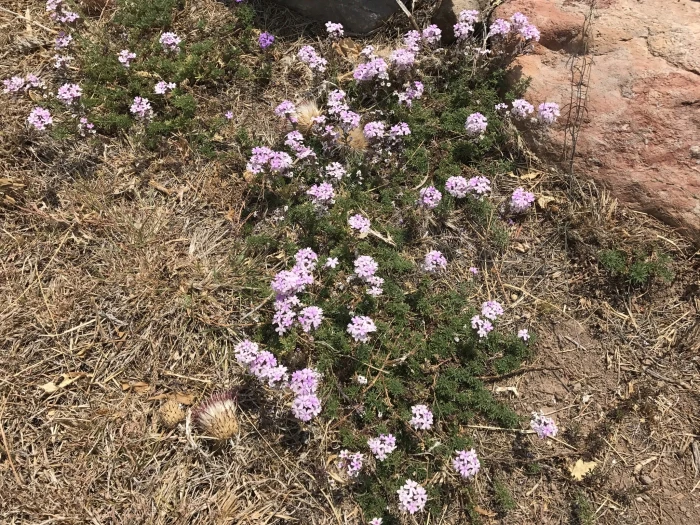Broad-Lobe Mock Vervain
(Glandularia latilobata)
Broad-Lobe Mock Vervain (Glandularia latilobata)
/
/

CK Kelly
CC BY 4.0
Image By:
CK Kelly
Recorded By:
Copyright:
CC BY 4.0
Copyright Notice:
Photo by: CK Kelly | License Type: CC BY 4.0 | License URL: http://creativecommons.org/licenses/by/4.0/ | Rights Holder: CK Kelly | Publisher: iNaturalist | Date Created: 2017-06-23T20:00:21Z |












































Estimated Native Range
Climate Requirements for Plainfield, Indiana
| This Plant | Your Site | Plant Suitability for Your Location | ||
|---|---|---|---|---|
| • Precipitation | 14" - 31" | 41" | Aquatic | Aquatic |
| • High Temp. | 83°F - 96°F | 86°F | Your summer temperatures are normal for this plant. | Excellent |
| • Low Temp. | 20°F - 34°F | 17°F | Your winter temperatures are normal for this plant | Excellent |
This plant may not grow well at your location - your precipitation is too high.
Summary
Glandularia latilobata, commonly known as Broad-Lobe Mock Vervain, is an annual herb native to open woodlands, grasslands, and scrub areas in Northwestern Mexico and Southwest USA. It typically grows to a height of 0.7-1 feet (0.2-0.3 meters) and a width of 1-2 feet (0.3-0.6 meters). The plant has a sprawling form and produces clusters of showy purple flowers that bloom profusely from spring to fall, attracting pollinators such as butterflies and bees.
Broad-Lobe Mock Vervain is valued for its extended flowering period and its ability to thrive in dry conditions, making it an excellent choice for xeriscaping and low-water gardens. It is often used in border plantings, rock gardens, and as ground cover. This species prefers full sun to part shade and does well in a variety of soil types, provided they have good drainage. While it is drought-tolerant once established, regular watering can promote more vigorous growth and flowering. It is relatively low-maintenance but may require deadheading to prolong blooming and prevent self-seeding. Potential problems include susceptibility to spider mites and fungal diseases in humid conditions.CC BY-SA 4.0
Broad-Lobe Mock Vervain is valued for its extended flowering period and its ability to thrive in dry conditions, making it an excellent choice for xeriscaping and low-water gardens. It is often used in border plantings, rock gardens, and as ground cover. This species prefers full sun to part shade and does well in a variety of soil types, provided they have good drainage. While it is drought-tolerant once established, regular watering can promote more vigorous growth and flowering. It is relatively low-maintenance but may require deadheading to prolong blooming and prevent self-seeding. Potential problems include susceptibility to spider mites and fungal diseases in humid conditions.CC BY-SA 4.0
Plant Description
- Plant Type: Herb
- Height: 0.7-1 feet
- Width: 1-1.5 feet
- Growth Rate: Moderate
- Flower Color: Purple, Pink, Blue
- Flowering Season: Spring, Summer, Fall
- Leaf Retention:
Growth Requirements
- Sun: Full Sun, Part Shade
- Water: Low
- Drainage: Medium, Fast
Common Uses
Bee Garden, Bird Garden, Butterfly Garden, Deer Resistant, Groundcover, Hummingbird Garden, Low Maintenance, Showy Flowers
Natural Habitat
native to open woodlands, grasslands, and scrub areas in Northwestern Mexico and Southwest USA
Other Names
Common Names:
Scientific Names: Glandularia latilobata, Glandularia bipinnatifida var. latilobata, Verbena bipinnatifida var. latilobata, Verbena ambrosifolia f. eglandulosa
GBIF Accepted Name: Glandularia bipinnatifida var. latilobata (L.M.Perry) B.L.Turner